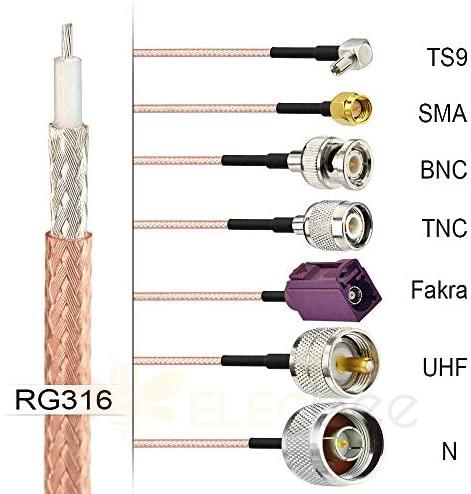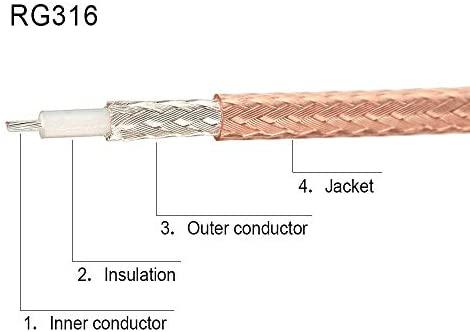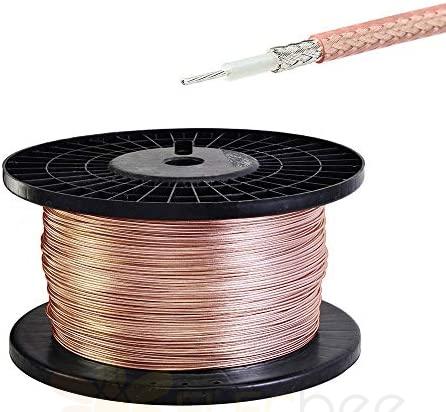If you've ever dabbled in the world of electronics, there's a good chance you've come across the term "coaxial cable." But do you really know what's under the hood of these cables, and more importantly, what the shield is all about? In this article, we'll dive deep into the world of coaxial cables, demystify their inner workings, and shed light on the vital role the shield plays.
A Brief Overview: Anatomy of a Coaxial Cable
Before we get into the nitty-gritty of coaxial cable shields, let's take a step back and understand the basic components that make up a coaxial cable.
The Core: Conductor
At the heart of every coaxial cable lies the conductor. This central wire is usually made of copper, which is a fantastic conductor of electricity. The conductor's primary role is to transmit electrical signals from one end of the cable to the other with minimal signal loss.
Keeping Things Separate: Dielectric Insulator
Surrounding the conductor is a layer of dielectric insulator. As the name suggests, this non-conductive material, often made of plastic or foam, serves to insulate the conductor and prevent any unwanted current leakage. It also helps maintain the overall structural integrity of the cable.
The Star of the Show: Shield
Now we arrive at the main event – the shield! The shield is a vital part of the coaxial cable that wraps around the dielectric insulator. It's typically composed of a metal, such as aluminum or copper, and serves multiple critical functions, which we'll discuss in detail later on.
The Final Touch: Outer Jacket
Last but not least, there's the outer jacket. This protective layer, usually made of PVC or other durable materials, keeps the coaxial cable safe from external forces, such as moisture, temperature fluctuations, and physical damage.

The Shield's Vital Role: Protecting Your Signals
Now that we have a basic understanding of the components that make up a coaxial cable, let's delve into the shield's essential functions.
Battling Interference: Electromagnetic Shielding
In today's world, we're surrounded by countless electronic devices, all emitting electromagnetic waves. These waves can wreak havoc on the signals traveling through coaxial cables, distorting the data and causing interference. That's where the shield comes in!
The shield acts as a barrier, reflecting or absorbing these pesky waves and keeping them at bay. This ensures that the signals passing through the cable remain clean and free from outside interference.
Grounding: Keeping Things Safe
Another vital function of the shield is grounding. Grounding is crucial in preventing electrical shocks, as well as protecting your electronic devices from damage due to power surges or lightning strikes. The shield, being made of a conductive material, helps to safely dissipate any excess electrical energy into the ground, keeping you and your devices safe from harm.

Types of Shields: Picking the Right One for the Job
Not all coaxial cable shields are created equal. There are several different types of shields, each with their own pros and cons, depending on the application.
Braided Shield
A braided shield consists of multiple strands of conductive material, such as copper or aluminum, woven together in a tight pattern. This type of shield is flexible and provides decent electromagnetic shielding. However, it may not be sufficient for high-frequency applications, as gaps in the braid can allow electromagnetic waves to sneak through.
Foil Shield
Foil shields are made up of a thin layer of metal, commonly aluminum, that completely surrounds the dielectric insulator. This type of shield offers excellent high-frequency electromagnetic shielding due to its complete coverage. However, it tends to be less flexible than braided shields, and its effectiveness can degrade over time due to wear and tear.
Combination Shield
As the name suggests, a combination shield utilizes both a braided and foil shield. This type of shield provides the best of both worlds, offering excellent electromagnetic shielding across a wide range of frequencies, as well as flexibility and durability. However, these benefits come at a higher cost compared to other types of shields.

In Conclusion: The Unsung Hero of Coaxial Cables
The shield in a coaxial cable may not be the most glamorous component, but it plays a pivotal role in ensuring the reliability and safety of the signals passing through the cable. From battling electromagnetic interference to grounding your devices, the shield is truly the unsung hero of coaxial cables. So, the next time you're hooking up your cable box or connecting your internet modem, take a moment to appreciate the humble shield and all it does for you!






